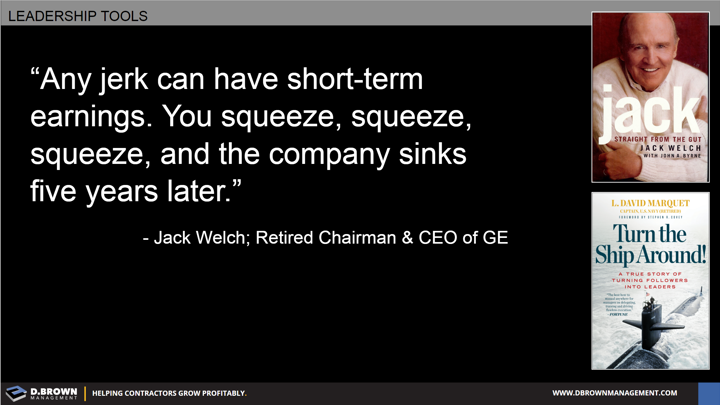Retired Navy submarine Captain David Marquet explains this very well in:
With the construction industry heading into even bigger talent shortages it is critical that leaders focus on building other leaders. This must be done at an accelerated rate just for contractors to maintain their market position and profitability.
Jack Welch discusses this in his memoirs written after he left GE.
Look at your organizational chart and ask the following:
- Who are your strong leaders?
- Who are your up-and-coming promising leaders?
- Who can you trace their development back to?
- What training or coaching can you put in place to help your leaders become better people builders?
Evaluate all leaders in your company on the following. Rate them 0-10 both in today’s demonstrated capabilities AND in what you believe they could be reasonably capable of in 3-5 years.
- Building the Projects
- Building the Business
- Building the People
Where are your strengths? Where are your gaps?
What can you do to leverage those strengths and close those gaps?

